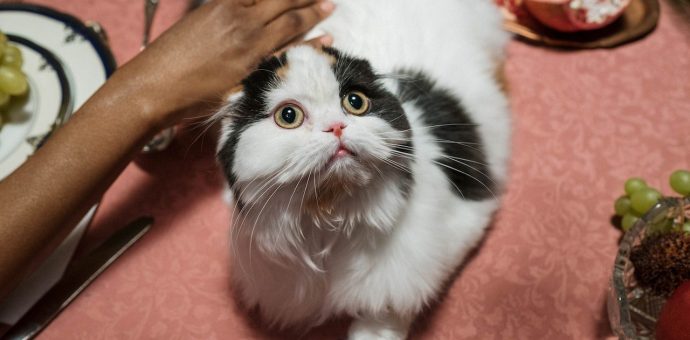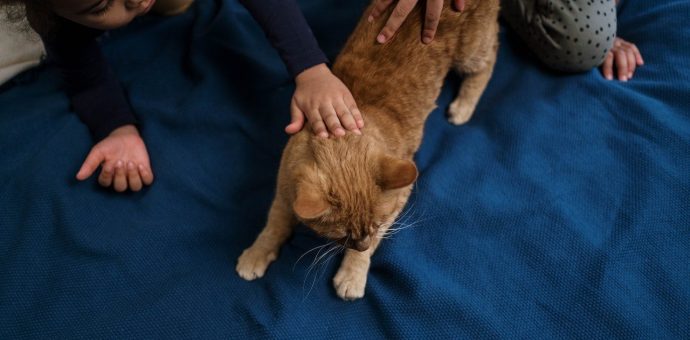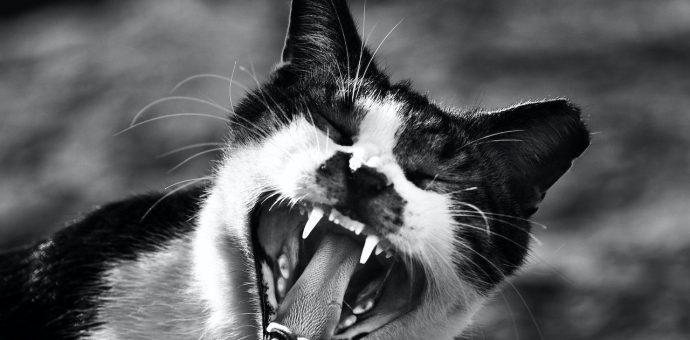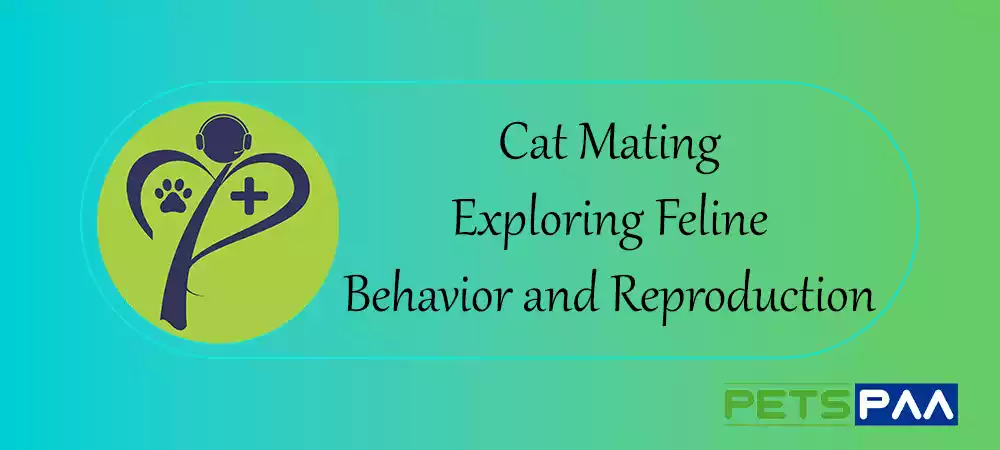As PetsPaa, we understand it is important to show affection and love to your feline friends. From cuddling to petting, these behavior helps to enhance the relationship between you and your loving feline pet. Over time, you may have noticed that your friendly cat suddenly becomes aggressive while being petted. This behavior is known as petting aggressiveness which can be distressing and annoying for cat owners.
However, it’s not uncommon for cats to exhibit aggression during petting sessions. This can be frustrating and even worrisome for cat owners. In this article, we will explore the causes of petting aggression in cats; ways to manage and prevent it from occurring.
Table of Contents
Introduction: Petting aggression meaning
In simple words, petting aggression is the aggressive behavior of cats while petting or grooming. This behavior might range from biting, scratching, or even growling at their owner or the person doing the petting. While cats may display aggressive behavior in rare instances, other cats may do it regularly, which makes it a severe problem that has to be addressed.
What is Petting Aggression in Cats
Petting aggression is a cat behavior that involves an aggressive response while being petted by their owners. This behavior can be mild to severe in form and shown in different ways, including hissing, growling, biting, scratching, or striking. Aggression can strike suddenly and unexpectedly, leaving cat owners puzzled about their cat’s behavior.
What Causes Petting Aggression in Cats
Petting aggression in cats can be caused by several factors, including:
Overstimulation
Every Cat has a physical stimulation limit and once that limit is crossed, then they can become frustrated and aggressive. When a cat is petted more or repeated physical contact can become excessive, cause the cat to become angry, and lead to aggressive behavior.
Negative Association
If a cat associates petting with a negative experience, such as a painful medical procedure, they may start to exhibit petting aggression. Similarly, if a cat was punished during petting, they may develop aggression as a defensive mechanism.
Medical Issues
Cats that are experiencing pain or discomfort due to underlying medical conditions, such as dental problems or arthritis, can cause pain when being touched, leading to developing petting aggression.
Lack of Socialization
Cats that have not been adequately socialized may exhibit petting aggression. Socialization involves exposing cats to different people, sounds, and situations to help them adapt and become comfortable with new experiences.
Discomfort
Cats can be choosy about where they like to be touched because some areas may be painful or uncomfortable for them to touch. If a cat feels uncomfortable during the petting session, they may become aggressive in stopping the action.
Fear or anxiety
Cats that are fearful or anxious may become aggressive during petting sessions as a way to protect themselves from perceived threats.

Signs of Petting Aggression in Cats
Signs of petting aggression in cats include:
- Hissing, growling, or yowling while being petted
- Biting or scratching during petting
- Aggressively swatting at the owner’s hand
- Dilated pupils, flattened ears, or a twitching tail, indicate an agitated state
Ways to Manage Petting Aggression in Cats
You must be able to deal with aggressiveness if your cat becomes angry and aggressive during the petting session. Here are some suggestions to manage petting aggression in cats:
Recognizing the Signs
Cats usually show mild signs of discomfort before exhibiting petting aggression. It’s important to recognize these signs and stop petting the cat before they become aggressive.
Redirecting Your Cat's Attention
When your cat becomes aggressive, try to distract them with something else, like toys or rewards. This can assist divert them from their aggressive behavior and calm them down.
Setting Boundaries
Cats should be allowed to set their boundaries for physical contact. Owners should respect these boundaries and avoid petting their cats when they show signs of discomfort.
Read More >> The Most Loved Cat Breeds in the World
Positive Reinforcement
Positive reinforcement, like treats or toys, can assist to encourage positive behavior when petting and lessen aggressiveness.
Providing Alternative Stimulation
Giving cats alternate types of stimulation, such as interactive toys or scratching posts, can assist to minimise their need for physical touch for stimulation.
Creating a Safe Space
If your cat becomes frequently aggressive, it can be a good idea to provide a secure area for them to calm and relax. This can assist lessen their overall distress and make them less prone to become aggressive during petting sessions.
Regular Vet Visits
If your cat’s aggressiveness is significant or regular, you should seek professional assistance from a veterinarian or animal behaviorist. Frequent vet visits can assist identify the underlying reason for the aggression and design a plan to manage it, such as resolving any underlying medical concerns that may be contributing to petting aggression.

How to Stop Petting Aggression in Cats
Many cat owners asked about how to stop petting aggression in cats, and the good news is that it is typically manageable rather than treatment. Here are some suggestions to prevent your cat from becoming frequently aggressive during petting sessions:
Understanding Your Cat's Body Language
Cats communicate by body language, therefore it’s important to figure out what your cat is expressing. If your cat starts to flick its tail or flattens its ears, it’s time to stop petting them.
Socialization
Socializing cats from a young age can help to prevent petting aggression. It involves exposing them to different people, sounds, and situations to help them adapt and become comfortable with new experiences.
Positive Reinforcement
When your cat behaves in a good manner during the whole petting session, reward them with treats and affection. This may help to reinforce positive behavior and reduce the chance of petting aggression in cats near future.
Avoiding Overstimulation
Avoid long petting sessions; keep them short. Owners should prevent overstimulating their cats during physical contact by recognizing when they have reached their threshold and quitting petting before they get upset. This can help limit overstimulation and the possibility of your cat becoming aggressive.
Identifying Discomfort Zones
Every cat is unique, and some may have sensitive areas on their bodies that they prefer not to be touched. By recognizing these uncomfortable zones, you may avoid petting them and lessen the possibility of your cat becoming aggressive.
Consistency
Consistency is important in preventing petting aggression. Owners should establish a routine for physical contact and ensure that everyone in the household follows it.

Common Mistakes to Avoid When Managing Petting Aggression in Cats
Some common mistakes to avoid when managing petting aggression in cats include:
Punishing the Cat
Punishing the cat for exhibiting petting aggression can worsen the behavior and damage the bond between the cat and their owner.
Ignoring Signs of Discomfort
Ignoring signs of discomfort might lead to overstimulation and the emergence of petting aggression. It’s essential to recognize when the cat has reached their limit and to stop petting.
Inconsistency
Inconsistency in physical contact routines can confuse the cat and lead to further aggression.
The Importance of Seeking Professional Help
If petting aggression persists or increases despite attempts to manage it, it is advisable to seek professional assistance from a veterinarian or animal behaviorist. They can assist identify underlying medical or behavioral concerns and provide effective treatment.
Conclusion
Petting aggression in cats may be frustrating and complicated for cat owners, by recognizing the origins of this conduct and taking steps to prevent and control it, will help you to cope with it and this will establish a strong bond with your feline friend.
Observe the cat’s body language, keep petting sessions short, and encourage positive behavior. Consistency, alternate types of stimulation, diverting their focus, and establishing a safe area for them can help lessen the incidence of petting aggression in cats. If your cat becomes more violent frequently, consider seeking expert advice.
As Team PetsPaa, we are committed to providing the best care for pet animals. By implementing our recommendations, you can prevent and manage petting aggression in cats, creating a healthy bond with your feline companion. Prioritize your cat’s welfare by following our expert advice.

FAQs (Frequently Asked Questions)
Q1. Why do cats try to bite you when you pet them?
Cats have distinct personalities and may have various tolerances for physical contact. Overstimulation, play aggressiveness, discomfort in communication, or taught behavior can all cause biting. It is critical to respect your cat’s boundaries and give suitable play outlets. If biting behavior persists, see a veterinarian.
Q2. How long does petting aggression last?
The duration of petting aggression can vary depending on several factors. One key factor is the individual personality and temperament of the pet. Some pets may exhibit petting aggression intermittently, with episodes lasting only a few seconds or minutes. Others may display prolonged aggression that persists for longer periods of time.
Q3. Can cat aggression be cured?
In most circumstances, cat aggressiveness may be managed and minimized, although a total “cure” is not always achievable. Understanding the underlying reason, seeking advice from a trained veterinarian, and applying behavior modification strategies, and positive reinforcement can be useful in reducing cat aggressiveness. Petting aggressiveness can be handled with the right approach, although it may not be totally cured.
Q4. What drugs can I give my cat for aggression?
As Team PetsPaa we advise, it is crucial to take medicines for cat aggressiveness should only be recommended by a qualified veterinarian after an in-depth evaluation of the underlying reason.
Typically anti-anxiety, anti-depressants, and anti-aggression medicines are used to minimize aggressiveness in general. The specific drug and dosage depend on the individual cat’s health and body weight. So, it is crucial to follow the veterinarian’s prescription and instructions for the safe and effective usage of drugs.







